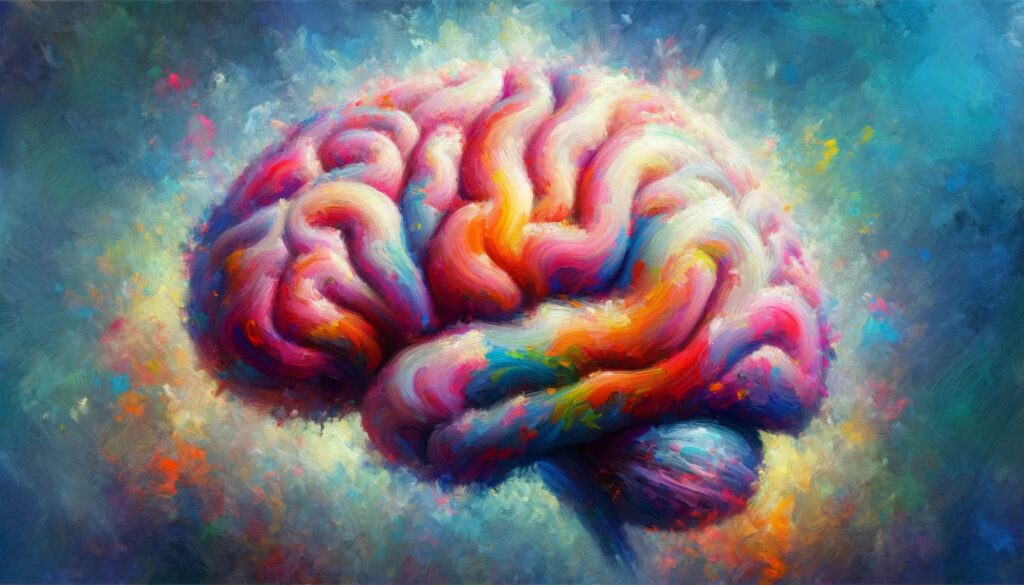| Key Takeaways | Description |
|---|---|
| Impact on Brain’s Reward System | Pornography triggers dopamine release, altering the brain’s reward pathways and potentially leading to addictive patterns. |
| Emotional and Psychological Consequences | Consumption can lead to emotional and psychological effects such as guilt, anxiety, and unrealistic expectations in relationships. |
| Influence on Sexual Health | Pornography shapes sexual preferences and expectations, which can affect sexual health and intimate relationships. |
| Potential for Addiction | Similar to other addictions, excessive use can lead to compulsive behaviors and dependency, requiring professional intervention. |
| Importance of Education and Preventive Measures | Educating individuals about the impacts, using tools like parental controls, and fostering open discussions are key in mitigation. |
The reality is today that pornographic content is often a click away, so understanding its impact is critical.
It’s about more than neuroscience; it’s about digital vigilance.
For parents, utilizing tools like Safe Lagoon App becomes vital in safeguarding their children’s online experiences.
As we explore the brain’s reaction to pornography, remember, knowledge equips us with the power to understand, protect, and guide our loved ones.
Understanding Pornography: A Brief Overview
What is Pornography?
- Definition: Visual material intended to stimulate sexual arousal.
- Types: Ranges from images to videos, across various digital platforms.
Historical Perspective
- Evolution: From print to digital, its accessibility and forms have evolved.
- Societal Impact: Shifts in societal norms and attitudes towards sexuality.
Types of Pornography and Their Accessibility:
Type of Pornography | Description | Accessibility |
Images | Still photographs with sexual content | High, easily available online |
Videos | Moving visual content, more immersive | Very high, streaming platforms |
Animated | Includes cartoons, animations | Moderate, specific online communities |
Written | Erotic literature, stories | High, available in digital and print forms |
Brain Chemistry and Pornography
The brain’s dance with dopamine, the key player in its reward system, is crucial in understanding pornography’s impact.
This section breaks down the role of neurotransmitters and how they react to sexual stimuli.
Dopamine and Reward
- Function: Dopamine signals pleasure and reward, motivating repeat behaviors.
- Impact: Heightened by sexual imagery, leading to a potent reward response.
The Reward System in Overdrive
- Overstimulation: Constant exposure can lead to a need for more intense content.
- Desensitization: Reduced response to other, non-sexual stimuli.
Short-Term Effects on the Brain
Immediate reactions in the brain to pornography can be intense.
Understanding these responses helps comprehend the lure and potential risks of repeated exposure.
Immediate Brain Responses
- Activation: Certain brain regions become highly active.
- Pleasure Surge: A spike in pleasure-inducing chemicals.
Consequences of Immediate Responses
- Expectation of Reward: Creates a cycle of anticipation and gratification.
- Momentary Escape: Provides a temporary escape from reality or stress.
Safe Lagoon stands as the digital guardian for over a million families.
It’s not just a tool; it’s peace of mind, ensuring kids’ screen time is both safe and balanced.
Simplicity meets security.
Long-Term Impact on the Brain
Persistent exposure to pornography can lead to significant neural changes.
These alterations can affect behavior and decision-making over time.
Neural Plasticity: The Brain’s Adaptability
- Changes in Structure: Regular exposure can alter neural pathways.
- Behavioral Implications: Potential shifts in preferences and behaviors.
Long-Term Brain Changes Due to Pornography
Change in the Brain | Description | Potential Impact |
Altered Reward Pathways | Increased need for stronger stimuli | Seeking more extreme content |
Reduced Grey Matter | In areas controlling decision-making | Impaired judgment, impulsivity |
Connectivity Changes | Between different brain regions | Altered emotional and social processing |
Emotional and Psychological Effects
The influence of pornography extends beyond neural responses, significantly impacting emotional and psychological well-being.
Emotional Repercussions
- Mood Swings: Fluctuations in emotional states post-consumption.
- Relationship Strain: Affecting perceptions and dynamics in personal relationships.
Psychological Impacts
- Potential for Anxiety and Depression: Linked to guilt, shame, or isolation.
- Distorted Reality: Skewed perceptions of sexual norms and expectations.
Effects on Sexual Health
Pornography’s portrayal of sexuality can have profound implications for an individual’s sexual health and relationships.
Influence on Sexual Preferences
- Shaping Desires: Potentially influencing sexual tastes and fantasies.
- Unrealistic Expectations: Creating misconceptions about sexual behavior and performance.
Impact on Intimate Relationships
- Intimacy Issues: Difficulty in forming or maintaining deep, meaningful connections.
- Communication Barriers: Misunderstandings and unrealistic expectations affecting communication.
Key Impacts on Sexual Health
- Altered Sexual Desires
- Challenges in Relationship Satisfaction
- Potential for Sexual Dysfunction
- Misaligned Sexual Expectations
Addiction and Compulsive Behavior
Understanding the addictive nature of pornography is crucial in addressing its potential risks.
Criteria for Addiction
- Compulsive Usage: Difficulty controlling consumption despite negative consequences.
- Withdrawal Symptoms: Emotional or psychological distress when not consuming.
Pathways to Compulsive Consumption
- Escalation: Need for more frequent or extreme content.
- Dependence: Reliance on pornography for emotional or sexual satisfaction.
Social and Cultural Impact
Pornography’s widespread consumption influences societal norms and interpersonal dynamics.
Effect on Social Perceptions
- Normative Influence: Shaping attitudes towards sexuality and gender roles.
- Desensitization: Reduced sensitivity to sexual content and issues.
Broader Societal Consequences
- Digital Divide: The gap between digital understanding among different generations.
- Cultural Shifts: Influencing cultural perceptions and discussions about sexuality.
Comparing: Pornography vs Other Addictive Stimuli
Comparing pornography addiction to other forms of addiction provides a clearer understanding of its unique aspects.
Unique Aspects of Pornography Addiction
- Accessibility: Unprecedented ease of access compared to other addictive substances.
- Societal Taboos: Challenges in discussing and addressing the issue openly.
Similarities with Other Addictions
- Dopamine Response: Similar neural reward circuit activation.
- Behavioral Impact: Similar patterns of compulsive behavior and dependence.
Recovery and Rehabilitation
Addressing addiction to pornography involves understanding recovery pathways and available support systems.
Overcoming Addiction
- Professional Help: Seeking therapy and counseling.
- Support Networks: Importance of community and peer support.
Rehabilitation Processes
- Cognitive Behavioral Therapy: Addressing underlying thoughts and behaviors.
- Mindfulness and Self-Regulation: Techniques to manage urges and impulses.
Preventive Measures
Effective prevention strategies are essential in mitigating the risks associated with pornography consumption.
Educational Approaches
- Awareness Programs: Educating about the potential risks and impacts.
- Healthy Sexuality Discussions: Promoting open, healthy conversations about sexuality.
Creating Awareness and Support Networks
- Parental Guidance: Using tools like Safe Lagoon’s Screen Time Management to monitor and guide children’s digital consumption.
- Community Involvement: Engaging community resources for education and support.
Role of Technology in Consumption
Technology, especially the internet, plays a pivotal role in the accessibility and consumption of pornography.
Digital Access and Consumption Patterns
- Ease of Access: The role of smartphones and digital devices in facilitating access.
- Anonymity Factors: How the internet’s anonymity contributes to consumption.
Technological Influences on Pornography Consumption
Factor | Description | Impact |
Internet Availability | Ubiquitous internet access | Increased consumption |
Anonymity Online | Ability to consume privately | Encourages exploration |
Mobile Technology | Access through smartphones | Convenience and constant access |
FAQs on Pornography and Brain Health
Pornography significantly impacts the brain’s reward system by triggering the release of dopamine, a neurotransmitter associated with pleasure and reward.
When an individual views pornography, the brain releases dopamine, creating a sense of euphoria or ‘high.’
This process is similar to the response triggered by other rewarding activities, like eating or social interactions.
However, with repeated exposure to pornography, the brain starts to adapt to this high level of stimulation.
Over time, it requires more intense or frequent exposure to pornography to achieve the same level of reward or pleasure.
This can lead to a cycle where normal, everyday activities become less satisfying in comparison, potentially driving a person to seek out more pornography in search of that dopamine ‘high.’
This cycle can contribute to the development of addictive patterns, where the individual becomes increasingly dependent on pornography for emotional or psychological gratification.
Yes, pornography can lead to addiction in some individuals.
Pornography addiction, much like other forms of addiction, is characterized by compulsive consumption, loss of control, and continued engagement in the behavior despite negative consequences.
The brain’s neuroplasticity allows it to adapt to the high levels of dopamine released during the viewing of pornography.
Over time, this can lead to changes in the brain’s reward circuitry, making it more difficult for the individual to find pleasure in less stimulating activities.
As a result, individuals may find themselves seeking out pornography more frequently or requiring more extreme content for the same level of satisfaction, indicative of addictive behavior.
Additionally, withdrawal symptoms such as moodiness, irritability, or cravings when trying to reduce or stop pornography use further suggest addictive tendencies.
It’s important to recognize these patterns and seek professional help if they begin to interfere with personal relationships, work, or overall well-being.
The emotional impacts of pornography consumption can be varied and complex.
Short-term effects often include a temporary sense of pleasure or escape.
However, long-term consumption, especially when excessive, can lead to a range of negative emotional outcomes.
These may include feelings of guilt, shame, or embarrassment, particularly if the individual’s consumption goes against their personal values or societal norms.
There can also be a sense of isolation or loneliness, as pornography consumption is often a solitary activity that can replace real human connections.
Over time, individuals may experience anxiety or depression, potentially linked to the way pornography consumption affects self-esteem and interpersonal relationships.
In some cases, the unrealistic portrayal of sex in pornography can lead to dissatisfaction with real-life sexual relationships, further contributing to emotional distress.
It’s crucial for individuals experiencing these emotional impacts to seek support, whether through counseling, support groups, or open discussions with trusted individuals.
Pornography can have a significant impact on sexual health, both positively and negatively.
On one hand, it can serve as a source of sexual education and exploration, helping individuals understand their preferences and desires.
However, the unrealistic portrayal of sex in pornography often leads to distorted expectations about sex, body image, and sexual performance.
This can create unrealistic standards for both oneself and partners, potentially leading to dissatisfaction in sexual relationships.
In some cases, excessive consumption of pornography may be associated with sexual dysfunction, including decreased libido, difficulties with arousal, or challenges in achieving orgasm without pornography.
It’s also linked to a higher likelihood of engaging in risky sexual behaviors, as frequent viewers may seek to emulate behaviors seen in pornography without considering the real-world implications, such as the importance of consent and safe sex practices.
Balancing the use of pornography with a healthy, realistic understanding of human sexuality is key to maintaining sexual health.
Reducing the negative effects of pornography involves several proactive steps.
Firstly, it’s important to cultivate self-awareness about one’s consumption habits.
Recognizing when pornography use is becoming excessive or problematic is the first step towards making changes.
Setting limits on consumption, such as designated times or durations for use, can help manage and reduce exposure.
For parents, tools like Safe Lagoon can be effective in managing and understanding their children’s online activities.
Seeking alternative activities and hobbies that provide fulfillment and satisfaction can also help reduce reliance on pornography for emotional or psychological gratification.
Open communication with partners about pornography use and its impact on relationships can help address any misunderstandings or unrealistic expectations.
In cases where pornography use has become compulsive or addictive, professional help, such as therapy or counseling, can provide support and strategies for managing the behavior.
Finally, educating oneself about the realities versus the portrayals of sex in pornography can help mitigate its impact on sexual health and relationships.





